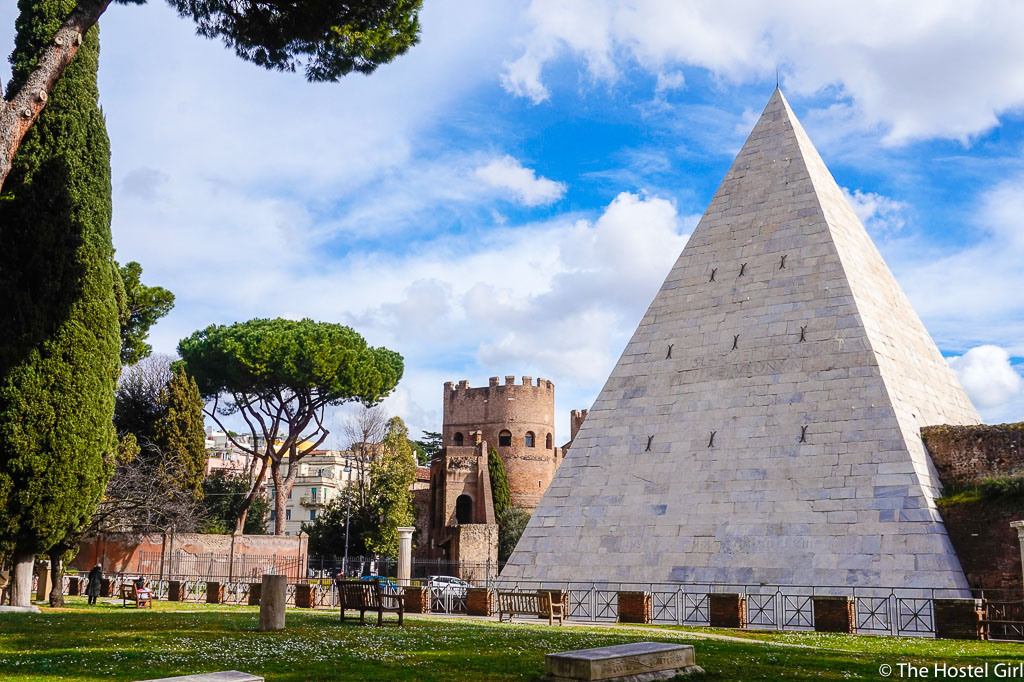Before I begin this post I want to thank the management of the Non-Catholic Cemetery in Rome for allowing me to publish this. As a traveller it is important to remember that there are certain spaces that deserve a little respect and cemeteries are one, especially when they are home to the graves of locals and loved ones who may often receive visitors.
It’s for this reason that the Non-Catholic Cemetery in Rome asks its visitors, amongst other things, not to publicly publish photos and to take them only for their own private use.
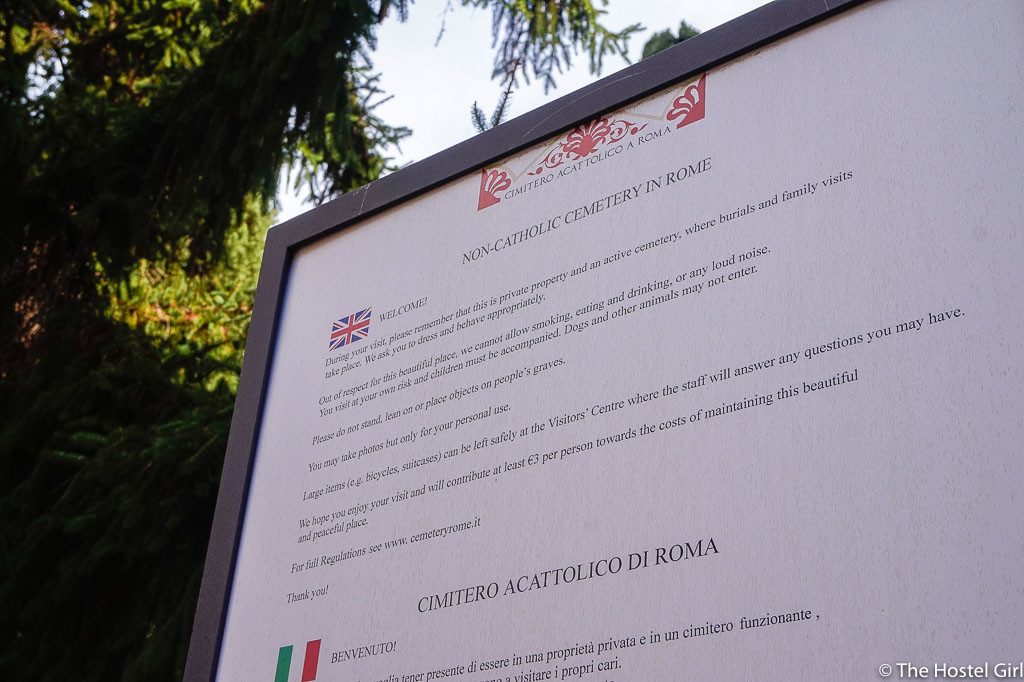
The Cemetery is however open to public visits and it is breathtakingly stunning, which is why I wanted to to tell you guys about it.
With delicate architecture, history and beautiful botanics it makes for the perfect afternoon trip under the Roman sun and away from the rushed crowds of the city centre. So thank you Amanda and the rest of the team for the permission to publish the following photos…
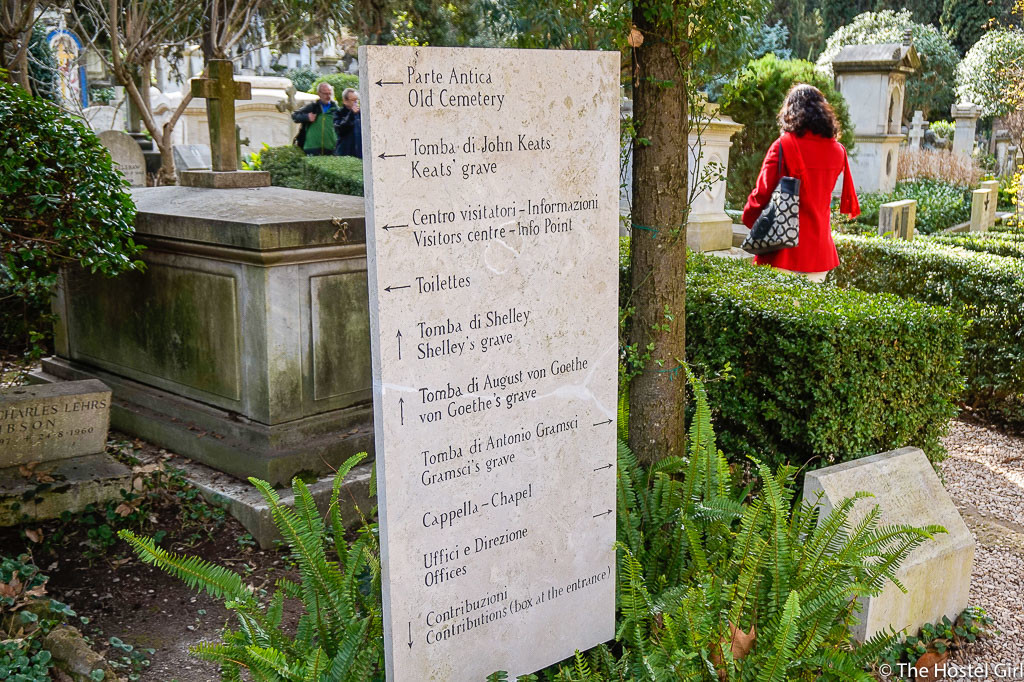
History of The Non-Catholic Cemetery, Rome
The Non-Catholic Cemetery in the Testaccio district of Rome has been a designated place for the burials of non-Catholics and foreigners since 1716. Otherwise known as Rome’s Protestant Cemetery, the land was designated by the grace of Pope Clement XI as a result of the exiled Catholic English King James II’s residency in Italy.
Whilst the King was Catholic, many of the supporters who had followed him in his exile were Protestants and it was this loyalty that afforded them a proper burial and resting ground in Rome, despite their Non-Catholic dedications.
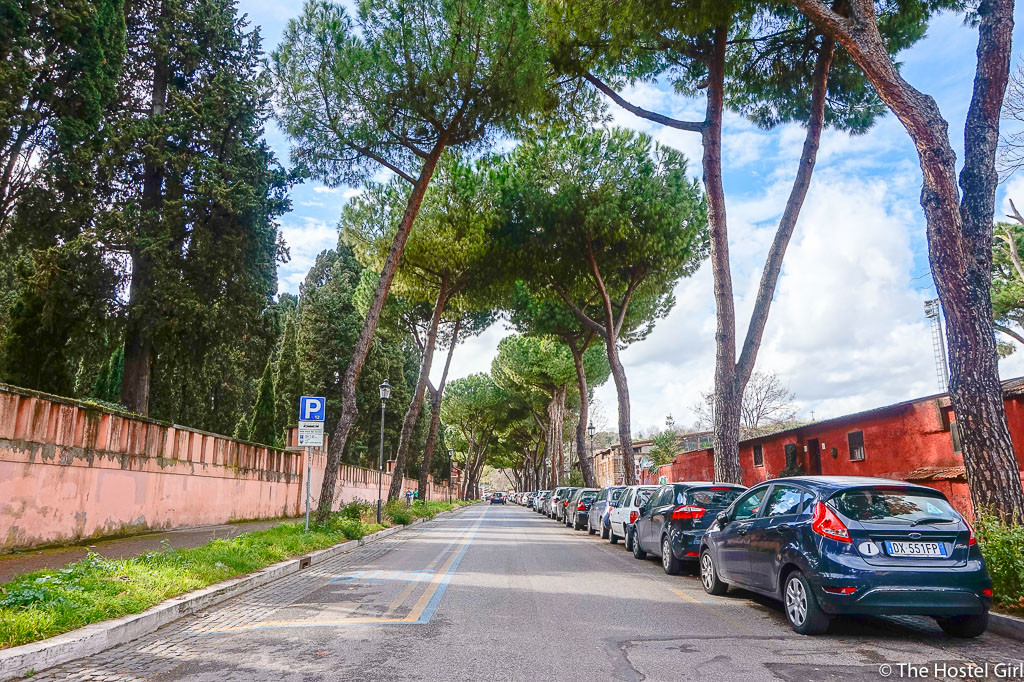
The full history of how this initial piece of land came to be the final resting place for so many non-Italian, non-Catholic souls can be read here on the official website.
Equally as fascinating though is the architecture that surrounds the burial land…
Architecture of the Non-Catholic Cemetery
The Pyramid of Caius Cestius
Little is known about Caius Cestius, the man whose name is inscribed on one side of the Pyramid. But the monument built in his name is thought to have been built between 18 and 12 BC. Which makes it over 2,000 years old!
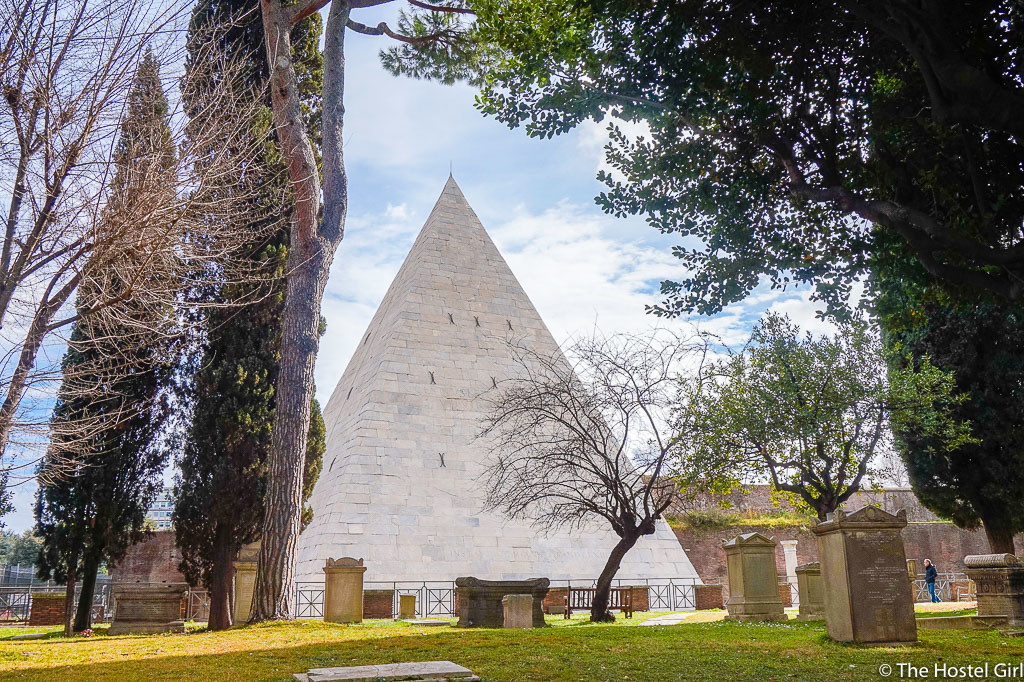
But why is there an Egyptian Pyramid in the heart of the Testaccio neighbourhood? Well the rumour is that at least four used to stand in the city in a testament to Roman conquests of the time taking place in Egypt. The Pyramid of Caius Cestius is the only one to have survived to the present day.
And survive it did! Despite losing it’s tip during a lightening storm in November 1861 and narrowly avoiding the German bombing raids on Rome during the Second World War, the 36.4 metre high Pyramid continues to loom over the graves within the Non-Catholic cemetery that was founded around 1,700 years after Cestius’ commissioned monument.
Note: It is possible to get a guided tour within the Pyramid of Caius Cestius! You must call in advance to make a reservation and the local number is 06 39967700. I really hope to do this when I return to Rome.
The Aurelian Walls
The Aurelian Walls were built between 271 AD and 275 AD, and their adoption of pre-existing monuments and buildings to complete them reflect the rush in which they were built. The Pyramid of Caius Cestius for example was incorporated in the part of the walls that surrounds the Non-Catholic Cemetery and the city of Rome itself.
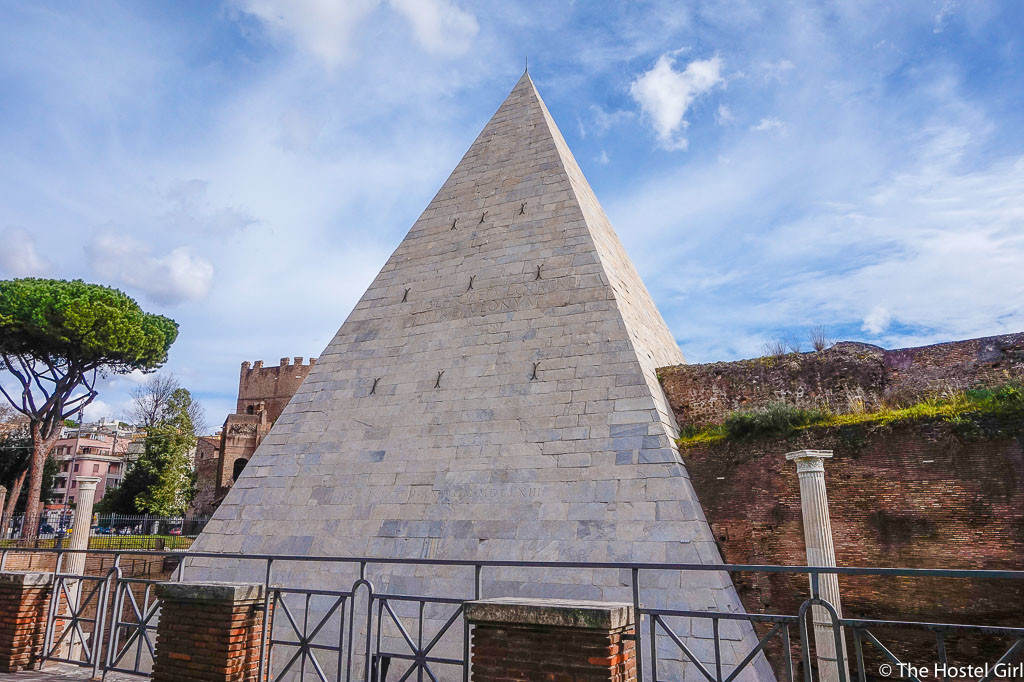
The Aurelian Wall can be seen clearly on the right hand side of this picture incorporating the existing structure of the Pyramid of Caius Cestius
Why the rush? Well despite decades of expansion during which the city of Rome had grown far beyond the original Servian Wall that defended the city, no efforts had been made to extend the old wall to reflect this expansion. Rome, it appeared, could defend themselves.
However during the early 2nd Century BC the Roman Army began to struggle under barbarian invasions and so Aurelian, the 44th Emperor of Rome, called for the new wall to be built. And whilst the Aurelian Walls acted more as a deterrent than a defence, they remained the city’s main fortifications all the way up until the 19th Century!
Famous Graves within the Non-Catholic Cemetery
There are certain ethics that go with visiting cemeteries as I touched on in the introduction, but this becomes even more apparent when the cemetery hosts the remains of notable people.
Jo from Frugal First Class Travel recently published a great post on this which I highly recommend reading, in which she highlighted the problem with ‘the cult of the dead celebrity’: The reason you shouldn’t visit Pere Lachaise.
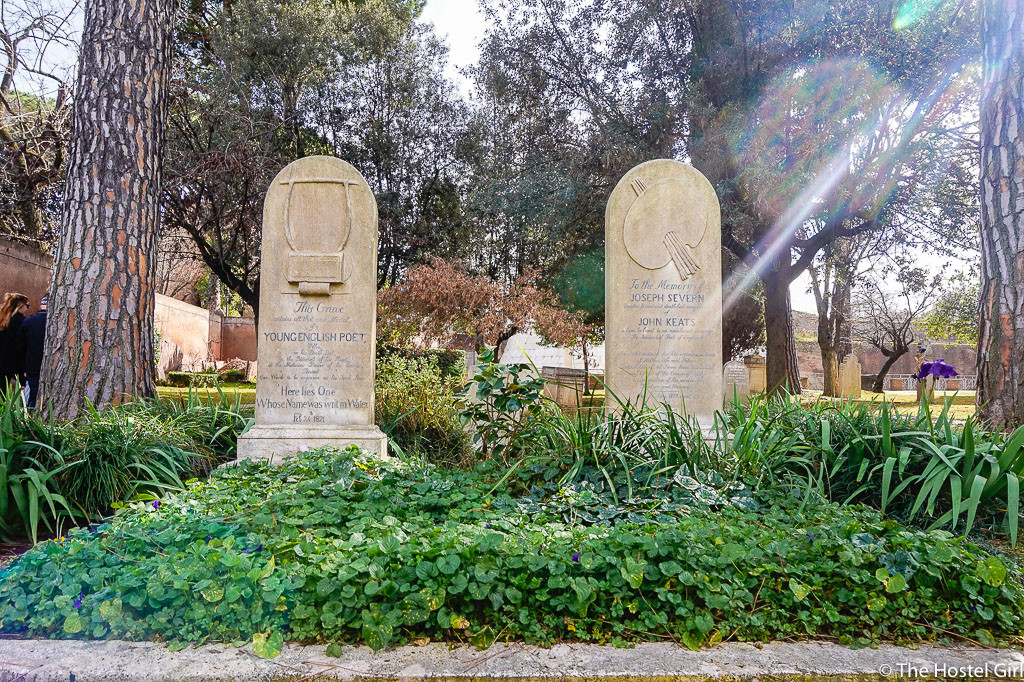
And I have to say that arriving at the Non-Catholic Cemetery with the sole intention of visiting only the graves of dead poets would lessen your experience. The cemetery is still an active resting ground with burial monuments dating back to the 18th century delicately entwined with fresh plots and fresh flowers.
But I also wanted to note that if the cemetery does attract dead-celebrity tourism then it does so with far less transparency than occurs at Père Lachaise. Having visited both the Parisian and Roman cemeteries I can say that the experience of visiting the popular tomb of Oscar Wilde contrasts greatly with the respected plot of John Keats.
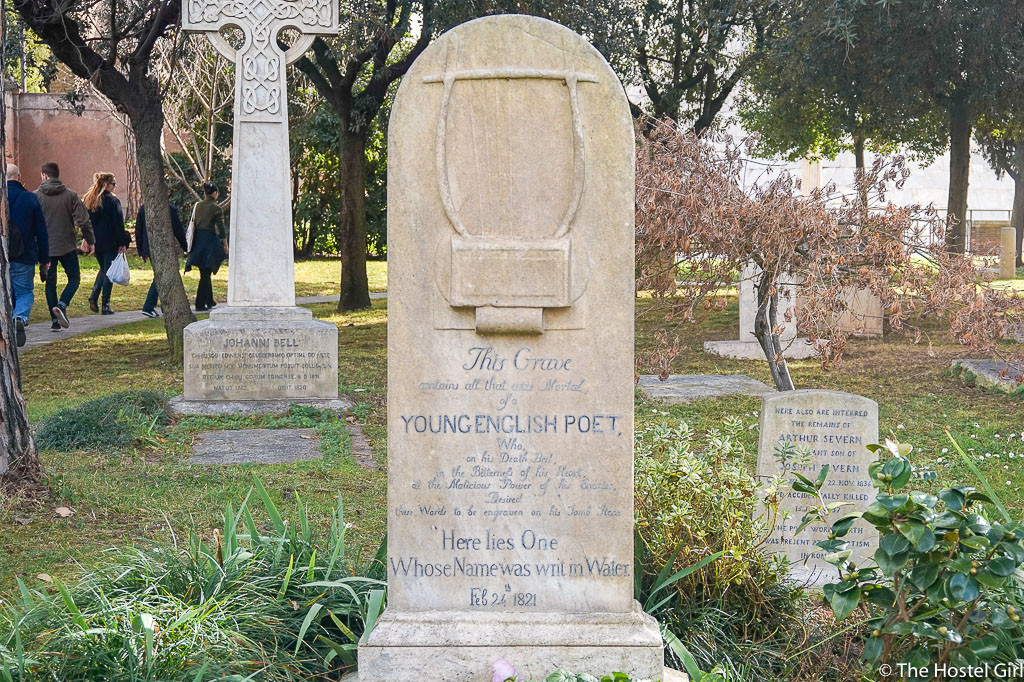
The Graves of John Keats and Joseph Severn
Whether it was the time of year (February) or the fact that the cemetery lies outside of the main city centre of Rome, the area around Keats’ grave was empty whilst the plot itself still looked well kept and beloved.
There definitely was none of the graffiti or ‘donated gifts’ that surround the notable graves in Père Lachaise. It seems the celebrity fandom that surrounds Wilde and Morrison is more feverish than that which surrounds Keats.
Keats did have one fan though who visited him in the Non-Catholic Cemetery and refused to leave. Next to the unnamed gravestone of a ‘Young English Poet’ stands the stone for Joseph Severn.
The life of Severn, an English portrait painter, is inextricably entangled with the life of Keats and once you know their story there is no question as to why their graves should stand side by side in Rome.
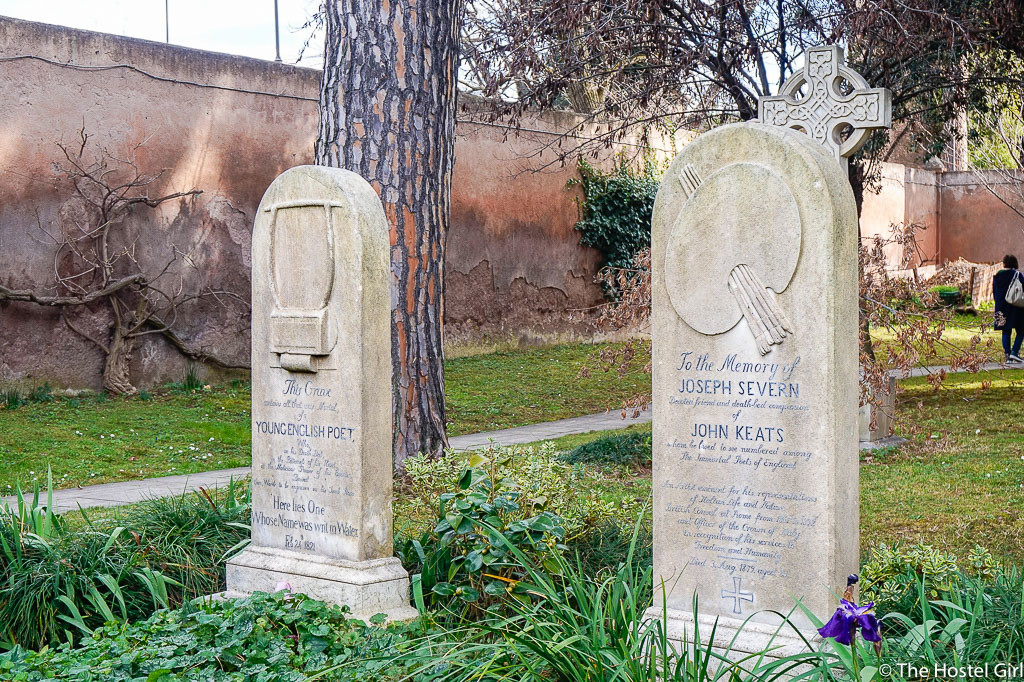
The Grave of Percy Bysshe Shelley
Another friendship cemented in cold stone within the Non-Catholic Cemetery is the friendship between the English poet Percy Bysshe Shelley and his biographer, Edward John Trelawny. Trelawny was a good friend of Shelley and arranged for the burial of his ashes in Rome. He also bought his own plot adjacent to that of his friend’s, in preparation for the burial of his own ashes.
On Trelawney’s tomb reads four lines from one of Shelley’s poems:
“These are two friends whose lives were undivided:
So let their memory be, now they have glided
Under the grave: let not their bones be parted,
For their two hearts in life were single-hearted.”
Note: For a full list of notable graves at the Non-Catholic Cemetery and their history click here.
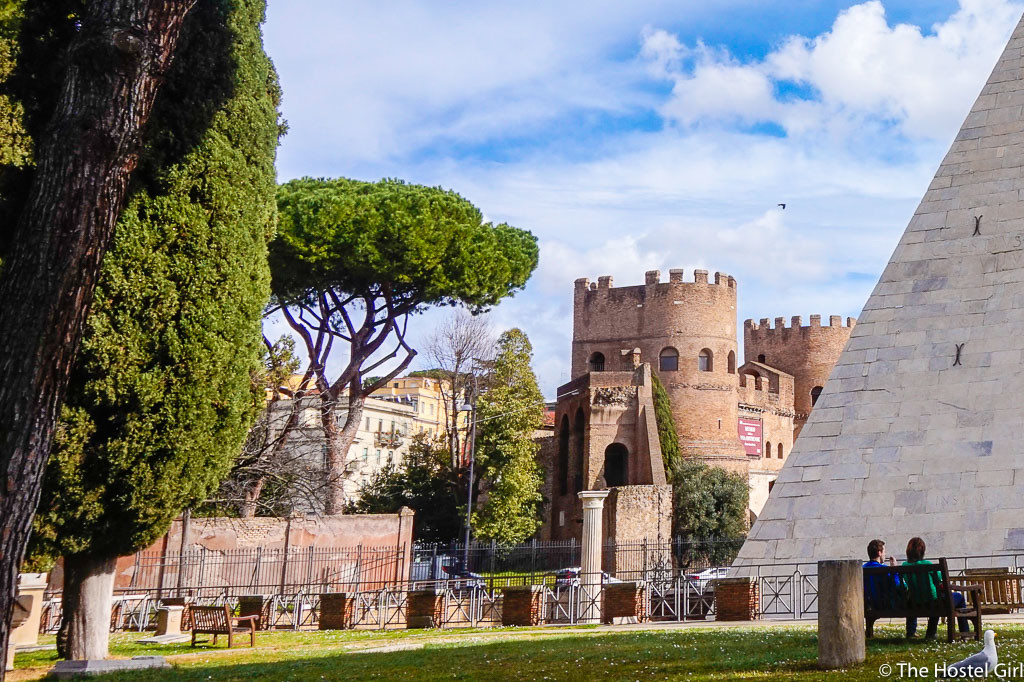
Why Visit The Non-Catholic Cemetery of Rome?
If you ever get the chance to visit Rome and want to experience life on the outskirts of one of the world’s most popular city breaks, the Non-Catholic Cemetery in the Testaccio district was one of the most peaceful and visually breathtaking experiences during my trip. Of course, I was especially lucky to have been gifted a sunny day and blue skies during my visit. I hope you get the same!
I’d like to thank Valentina who first gave away the secret of this cemetery on her fantastic Taste of Testaccio walking tour with Eating Italy, and The Beehive Rome for hosting me and recommending the tour. I’d also like to thank again the team at the Non-Catholic Cemetery for giving me permission to write this article and share my photos. You can visit the official website for the cemetery here.
Where to find the Non-Catholic Cemetery
Address: Via Caio Cestio, 6, 00153 Roma, Italy
Opening hours: Mon – Sat: 9.00 – 17.00; Sun: 9.00 – 13.00 ( from 24 April to 12 June 2016 the Cemetery will be open on Sundays from 9:00 to 17.00)
Nearest metro station: Piramide station
Have you ever been blown away by a beautiful cemetery? Let me know in the comments below!
